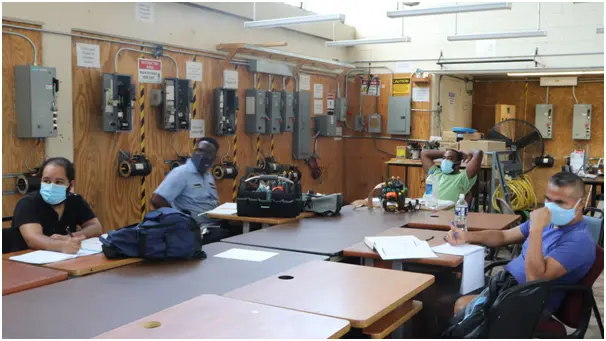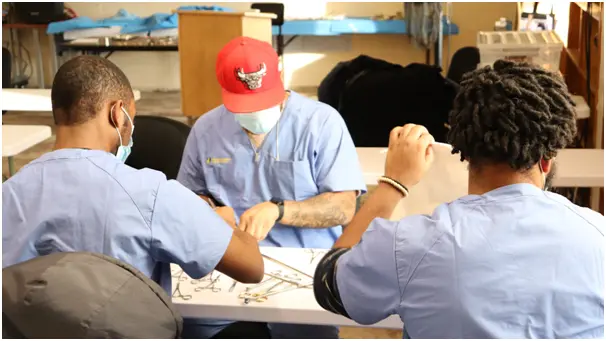Pennsylvania faces a trade school skills gap that threatens its economic growth and the future of its industries. As employers across Philadelphia and the state struggle to find enough skilled professionals, institutions like the Philadelphia Technician Training Institute (PTTI) have stepped up to bridge this divide and develop the talent pipeline necessary for a thriving local economy
Despite rising wages and urgent demand, positions sit unfilled for months. His story isn’t unique; employers nationwide struggle with a critical trade school skills gap, where good jobs go unfilled because workers lack specialised training. This disconnect doesn’t just frustrate business owners; it stifles local workforce needs and leaves talent untapped.
Local workforce needs go unmet not because Pennsylvanians lack drive, but because pathways to these careers remain invisible to many.
Why?
Misperceptions linger. High school grads hear “college or bust,” unaware that certified electricians out-earn 40% of bachelor’s degree holders within five years. Others can’t afford to pause their incomes for training; a single parent can’t afford to gamble on unpaid internships. Meanwhile, rapid tech advancements outpace traditional apprenticeships; solar installers now need digital diagnostics training that older workers never received.
The institutions like Pennsylvania trade school networks become lifelines. Take Keystone Technical Institute’s “Earn While You Learn” model: adults train evenings on CNC machines while working days at warehouses. Or Reading’s Youth Build program, where at-risk teens rebuild blighted homes while earning carpentry credentials. These bridges matter because vocational training workforce solutions must fit real lives.
A pivotal element in addressing the trade schools’ skills gap is active industry collaboration. The Philadelphia Technician Training Institute is well aware of this, its close relationships with leading regional employers continually inform its hands-on curriculum. By gathering feedback from industry partners, PTTI ensures that students graduate equipped with in-demand expertise, whether it’s in skilled trades training, such as welding, advanced manufacturing, or electrical work.

This proactive partnership with employers means that training remains relevant as technology evolves. For example, with the growth of green energy and automation, PTTI frequently updates its programs to reflect emerging careers. This level of integration strengthens the pipeline from student to skilled worker, tackling the workforce needs of the greater Pennsylvania workforce.
The U.S. Chamber of Commerce reports staggering spikes in demand:
Meanwhile, over 2.1 million manufacturing jobs could remain vacant by 2030, as Baby Boomers retire and education systems struggle to keep pace with the evolving needs of the workforce. This trade school skills gap represents both a crisis and an opportunity for skills gap solutions.
Pennsylvania’s vocational training workforce and development system actively connects employers with training resources. However, ageing infrastructure and rapidly changing technologies intensify the pressure. According to the PA Workforce Development Board, aligning worker skills with high-demand fields like healthcare, construction, and advanced manufacturing is now a statewide priority.

The most urgent local workforce needs are in skilled trades :
Traditional four-year degrees alone can’t bridge this divide. As Forbes notes, “academics can’t fill” roles requiring hands-on expertise, a truth accelerating reform in career education and vocational training workforce programs.
Local Workforce Needs in Philadelphia and Beyond
We don’t operate in isolation; we work alongside employers to develop practical, industry-aligned training:
“We don’t keep a program around unless there’s industry demand and a competitive salary.”
Modern vocational training workforce models go beyond tools and tech. At ITI Technical College, labs mimic real-world environments where students learn to:
This dual focus develops adaptable, job-ready professionals who meet the real needs of local workforces.
Pennsylvania trade school programs thrive by focusing on three key pillars:

These are core skills gap solutions that serve both industry and community.
Solving the trade schools’ skills gap is not a solo mission—it requires a collaborative push:
The trade school skills gap is solvable. When educators and industries collaborate, they build a reliable talent pipeline revitalising local economies, one skilled graduate at a time. Reader Precision’s youth apprenticeships are proof: hands-on learning doesn’t just fill roles, it strengthens America’s industrial backbone.
Empowering people with the right tools and training is Pennsylvania’s most incredible opportunity. Pennsylvania trade school programs are leading that transformation, bridging the skills gap and fulfilling local workforce needs for a more resilient future.
Read More: